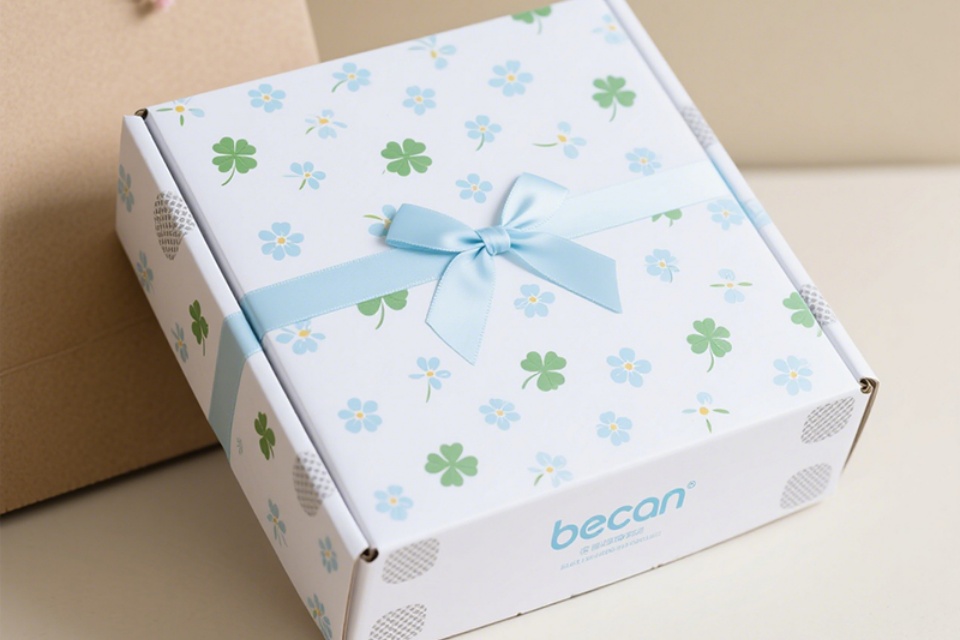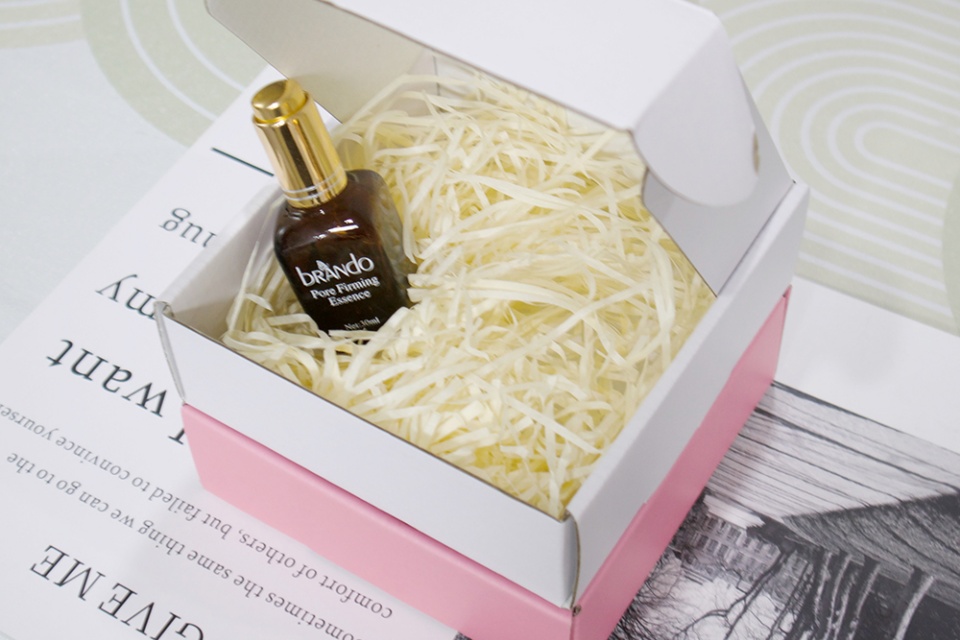Eco-Friendly Gift Packaging Solutions
Eco-Friendly Gift Packaging Solutions
Summary
Eco-friendly gift packaging solutions represent a growing movement toward sustainable and responsible gifting practices, aiming to minimize environmental impact while enhancing the aesthetic and functional aspects of gift presentation. As awareness of environmental issues continues to rise, consumers increasingly prioritize eco-friendly packaging options that utilize renewable or recyclable materials, thereby contributing to waste reduction and conservation of natural resources. This shift reflects broader societal values centered around sustainability and corporate social responsibility, making eco-friendly gift packaging a notable trend in the retail and gifting sectors.
The diverse range of eco-friendly packaging includes reusable fabric wraps, recycled paper, biodegradable materials, and innovative composite options that combine multiple sustainable elements. Reusable and fabric packaging, for example, not only provides an appealing alternative to traditional gift wrap but also encourages a zero-waste lifestyle by allowing recipients to repurpose the materials for future use. Other popular choices, such as recycled paper and cardboard, help mitigate pollution and conserve resources, while plant-based packaging offers biodegradable solutions that align with contemporary consumer preferences for environmentally conscious gifting.
Prominent challenges remain in the adoption of eco-friendly packaging, including higher costs associated with sustainable materials and the need for consumer education to overcome skepticism regarding the effectiveness of green alternatives. Additionally, regulatory compliance and sourcing sustainable materials can complicate transitions for businesses seeking to align with eco-conscious practices. Despite these hurdles, the potential benefits—including enhanced brand image, customer loyalty, and support for a circular economy—drive continued interest and innovation in eco-friendly gift packaging solutions.
The increasing integration of technology and personalization into eco-friendly packaging designs is reshaping the gifting experience, as brands explore interactive elements and customization options that appeal to modern consumers. As companies respond to evolving market demands, eco-friendly gift packaging is not only becoming a viable alternative but also a key differentiator in a competitive landscape, underscoring the significance of sustainable practices in contemporary commerce.
Types of Eco-Friendly Gift Packaging
Eco-friendly gift packaging encompasses a variety of materials and methods that prioritize sustainability and reduce environmental impact. This section explores the most common types of eco-friendly packaging options available for gifting.
Reusable and Fabric Packaging
One practical alternative to traditional gift wrap is the use of reusable packaging such as fabric shopping bags or cloth wraps. These materials not only provide an attractive presentation but can also be repurposed for future gifting or everyday use, promoting a zero-waste lifestyle.
Recycled Paper and Cardboard
Recycled paper packaging is a popular choice among eco-conscious individuals. It is biodegradable and offers a range of textures and designs that can complement various gifts. This option helps conserve natural resources and reduces pollution associated with conventional paper production. Additionally, corrugated cardboard is frequently utilized for shipping and can be easily recycled, making it a sustainable option for larger gifts.
Textile Packaging
Textile packaging made from natural fibers such as cotton or jute is another eco-friendly alternative. These materials are reusable and biodegradable, contributing to a reduction in single-use packaging. Textile options often provide an aesthetic appeal and are frequently used for luxury gift items, although they tend to be more expensive than disposable options.
Organic Ecological Textiles
Organic ecological textiles, including materials like hemp and organic cotton, are increasingly popular for packaging. These textiles are sturdy, biodegradable, and can serve multiple functions, such as wrapping or cushioning products. Their rapid decomposition rate compared to plastics further supports environmental sustainability efforts.
Plant-Based and Biodegradable Packaging
Plant-based packaging materials are gaining traction as alternatives to traditional plastics. These biodegradable options reduce waste and offer a more sustainable way to package gifts. By using materials derived from organic sources, companies can align their practices with the growing demand for eco-friendly solutions.
Composite and Innovative Packaging
Composite packaging, which combines different materials for enhanced functionality, is also emerging as a sustainable choice. Innovations in packaging materials, such as biodegradable plastics and plant-based fibers, are being explored to mitigate the environmental challenges posed by conventional packaging methods.
Minimal and Biodegradable Packaging
Opting for gifts with minimal packaging or using biodegradable materials can significantly decrease waste. This approach not only promotes sustainability but also appeals to consumers seeking environmentally friendly gifting solutions. By choosing packaging that is easily recyclable or compostable, individuals can contribute to a healthier planet.
Benefits of Eco-Friendly Gift Packaging
Eco-friendly gift packaging provides a multitude of advantages, appealing not only to environmentally conscious consumers but also offering significant benefits to businesses. As sustainability becomes increasingly vital in consumer choices, the adoption of eco-friendly gift packaging aligns with modern preferences and values.
Environmental Benefits
One of the primary benefits of eco-friendly gift packaging is its positive impact on the environment. Sustainable materials, such as biodegradable or recycled substances, contribute to reducing pollution and waste. Unlike traditional plastic packaging, which can take hundreds of years to decompose, eco-friendly options break down more easily, minimizing their contribution to landfills and marine litter. Additionally, these materials often produce fewer harmful gases during decomposition, contributing to better air quality and reduced greenhouse gas emissions.
Cost-Effectiveness
While the initial cost of eco-friendly packaging may be higher, it often proves to be more cost-effective in the long run. Reusable and durable packaging options reduce the need for frequent replacements, leading to long-term savings for both consumers and businesses. Companies that embrace sustainable packaging also experience decreased manufacturing and shipping costs, as eco-friendly practices tend to optimize resource use and waste management.
Enhanced Brand Image and Customer Loyalty
Utilizing eco-friendly packaging can significantly enhance a brand's image, especially among consumers who prioritize sustainability. Brands that actively promote eco-conscious practices are more likely to attract and retain customers who share these values. This shift not only boosts sales but also fosters loyalty, as consumers feel a connection with brands that align with their environmental concerns. By incorporating sustainable packaging, companies can demonstrate their commitment to corporate social responsibility, further enhancing their reputation in the market.
Versatility and Innovation
Sustainable gift packaging solutions often offer added versatility and innovative design options, allowing brands to stand out in a crowded marketplace. Eco-friendly packaging can be repurposed for various occasions, making it appealing to consumers looking for multifunctional gifts. As more brands adopt sustainable practices, the creative potential of eco-friendly packaging continues to evolve, offering unique experiences for consumers.
Support for Circular Economy
The shift towards eco-friendly gift packaging contributes to the development of a circular economy, where materials are reused and recycled rather than disposed of after a single use. This approach not only reduces waste but also promotes the conservation of natural resources. By choosing eco-friendly options, consumers and businesses can actively participate in a more sustainable economic model, helping to protect the planet for future generations.
Innovations in Eco-Friendly Gift Packaging
Eco-friendly gift packaging has evolved significantly in recent years, integrating sustainability with aesthetics and technology to meet modern consumer preferences. This section explores various innovations that have emerged in this space, reflecting a commitment to environmental responsibility while enhancing the gifting experience.
Eco-Luxury Packaging
Eco-luxury packaging merges high-end design with sustainable practices, creating a standout trend in corporate gifting. Companies now have the capability to offer luxurious packaging without compromising eco-consciousness, thanks to modern innovations. For example, sustainably sourced dyeing processes enhance the aesthetics of eco-luxury packaging with earthy, naturally derived colors such as soft greens and muted beiges, providing a sophisticated visual appeal devoid of toxic residues. Reusable packaging options, like handcrafted baskets or velvet bags, not only elevate the presentation but also promote sustainability by encouraging repeated use.
Personalization and Customization
Advancements in digital printing have made it easier than ever to create personalized packaging. Gifts can now feature the recipient's name, specialty, or even career achievements, transforming the packaging into a keepsake. Moreover, personalization extends to sensory experiences, incorporating the recipient's favorite colors, textures, or scents, which adds a layer of thoughtfulness and uniqueness to the gift-giving process. This attention to detail ensures that recipients feel special and appreciated, elevating their overall experience.
Tech-Enabled Features
Technology is reshaping eco-friendly gift packaging by introducing innovative features that bridge the digital and physical worlds. Near Field Communication (NFC) tags embedded in packaging allow recipients to access digital content, such as exclusive online rewards or event invitations, simply by tapping their smartphones. Furthermore, smart packaging designs that incorporate LED lights or sound modules provide an interactive element that surprises recipients and enhances the gifting experience. Such integrations underline the blend of innovation and sustainability that modern consumers seek.
Minimalism and Local Sourcing
Minimalist packaging designs are gaining popularity as companies strive to reduce waste while maintaining elegance. Simple, thoughtful designs that avoid excessive materials communicate a commitment to sustainability and create impactful impressions without unnecessary frills. Additionally, brands are increasingly partnering with local artisans to source sustainable packaging solutions, utilizing handcrafted paper or locally woven fabrics. These collaborations not only lower carbon footprints but also support small businesses, reinforcing a company's dedication to ethical practices.
Challenges and Limitations
The transition to eco-friendly gift packaging solutions in 2024 presents several challenges and limitations that packaging companies must navigate. One of the primary hurdles is the cost implication associated with adopting green materials and technologies. Sustainable materials often carry a higher price tag than traditional alternatives, which can affect the overall production costs and, consequently, the retail prices of packaged products.
Regulatory Compliance
Navigating the complex landscape of regulatory compliance is another significant challenge. As governments worldwide prioritize environmental issues, packaging companies face an evolving array of regulations that dictate standards for sustainability. These regulations may specify requirements regarding recycled content, biodegradability, and limitations on harmful chemicals. Each region may have different guidelines, necessitating ongoing research and legal oversight to ensure compliance, which can strain resources and disrupt operations if not managed effectively.
Sourcing Sustainable Materials
Sourcing sustainable materials remains a critical issue. The availability of eco-friendly materials can be inconsistent, as global demand often outstrips supply. Companies may struggle to find reliable sources for these materials, leading to potential disruptions in production. Additionally, the quality and characteristics of sustainable materials can differ from traditional options, which may impact packaging reliability and performance.
Consumer Perception
Consumer perception presents another barrier. While public awareness of environmental issues is growing, skepticism about the efficacy and quality of green packaging remains. Consumers who are accustomed to conventional materials may question the durability and aesthetic appeal of sustainable alternatives. Effective education and marketing strategies are essential to overcome these doubts, requiring manufacturers to communicate transparently about the benefits of eco-friendly packaging solutions.
Supply Chain Complexity
The complexity of supply chains for green materials can also pose significant challenges. The transition to sustainable packaging often necessitates adjustments in supplier relationships and logistics. Companies must establish partnerships with suppliers that meet environmental standards, which can be time-consuming and may lead to production delays. Additionally, the need to integrate these materials into existing production processes can require new investments in equipment and technology, further complicating the transition.
Market Trends and Consumer Preferences
Consumer preferences are significantly shaping the landscape of eco-friendly gift packaging solutions. As awareness of environmental issues increases, there is a notable shift towards sustainable practices among consumers, with many prioritizing eco-friendly products and packaging in their purchasing decisions. Research indicates that approximately 70% of U.S. consumers consider the environmental friendliness of packaging when making purchases, particularly among Millennials and Gen Z, who are more vocal and informed about sustainability due to digital platforms.
The Impact of Consumer Awareness
The growing demand for sustainable products is prompting manufacturers to adapt their packaging strategies. Companies are increasingly investing in eco-friendly solutions that utilize renewable or recyclable materials to meet consumer expectations. This shift in consumer behavior influences market trends, as brands recognize the necessity of aligning their packaging strategies with the values of eco-conscious consumers, which not only enhances their market appeal but also fosters brand loyalty.
Innovative Packaging Solutions
In response to these trends, brands are integrating innovative packaging designs that emphasize functionality and sustainability. For example, Tide's Eco-Box exemplifies how sustainability can be seamlessly incorporated into packaging design, demonstrating that eco-friendly options can be both practical and appealing to consumers. Moreover, companies like BloomsyBox are focusing on functional designs that not only protect the product but also enhance the overall gifting experience, ensuring that packaging is an integral part of the gift itself.
The Rise of Digital Connectivity
The rise of digital and virtual connectivity is also influencing consumer preferences in the realm of gift packaging. Today's consumers are attracted to interactive packaging elements such as QR codes that enrich the unboxing experience. This emphasis on engagement aligns with the demand for sustainable and resourceful commerce, where practical functionality and aesthetic appeal coexist.
Challenges and Considerations
Despite the positive trends towards sustainability, there are challenges associated with the transition to eco-friendly packaging. Companies face pressures related to profitability, operational costs, and the need for high-quality sustainable materials. Moreover, fluctuating market conditions and political landscapes can complicate corporate sustainability commitments, leading some businesses to reevaluate their sustainability goals in light of economic pressures.
Case Studies
Brand Implementations of Eco-Friendly Packaging
Refillable Packaging Models
Several brands have adopted refillable packaging as a sustainable alternative to traditional single-use containers. For instance, companies in the cosmetics and personal care industries have introduced durable, reusable bottles made from materials such as glass or aluminum. These initial purchases are complemented by refills offered in smaller, resource-light packaging, significantly reducing plastic waste and encouraging a circular economy. This model not only caters to environmentally conscious consumers but also enhances brand loyalty by fostering a commitment to sustainability.
Innovative Shipping Solutions
Brands in the fashion sector, particularly those offering subscription or rental services, have made strides in adopting reusable shipping materials. By utilizing reusable mailers, these companies minimize their raw material use and contribute to reducing the environmental impact associated with shipping products. Such practices reflect a growing trend toward sustainability that resonates with consumers and positions these brands as leaders in eco-friendly operations.
Consumer Preferences and Packaging Design
Understanding consumer preferences through market research has proven critical for companies looking to enhance their packaging sustainability. For example, Innocent Drinks exemplifies how packaging design can influence brand perception and consumer engagement. Their commitment to simplicity and eco-friendliness is reflected in their clear, minimalist bottles that not only showcase the product but also communicate their environmental values through playful messages. This strategy has contributed to positive consumer experiences and reinforces brand loyalty, as consumers increasingly favor brands that align with their sustainability goals.
Market Adaptations and Regulatory Pressures
Global Movement Towards Eco-Friendly Packaging
The global shift towards eco-friendly packaging is further supported by regulatory pressures, with numerous countries implementing laws mandating sustainable practices. For instance, the UN Environment Programme reported that 35 countries are set to require eco-friendly packaging by 2024, compelling manufacturers to transition towards materials such as recycled paper and biodegradable plastics. This regulatory framework not only aligns with global environmental goals but also creates a competitive market where sustainable practices become essential for brand relevance.
Success Stories in the Gift-Wrapping Sector
In the gift-wrapping industry, companies like Wrappily and EcoCraft have successfully introduced wrapping papers made from recycled materials. These innovations not only cater to consumer demand for sustainable options but also position the industry as a leader in adopting environmentally friendly practices. By focusing on eco-conscious production, these companies are setting benchmarks for sustainability that resonate with consumers and promote broader environmental stewardship.



